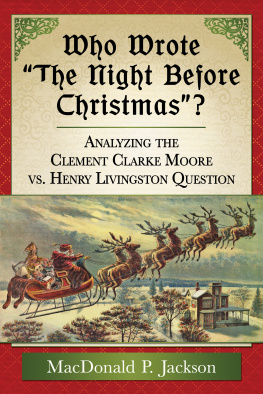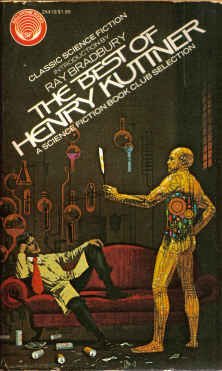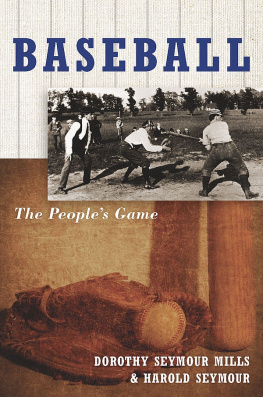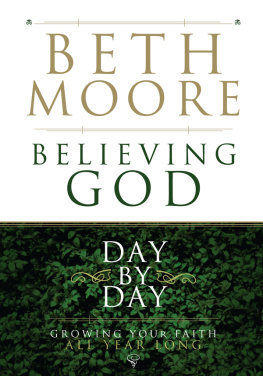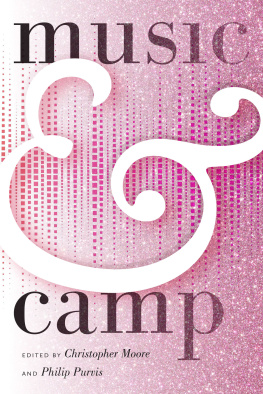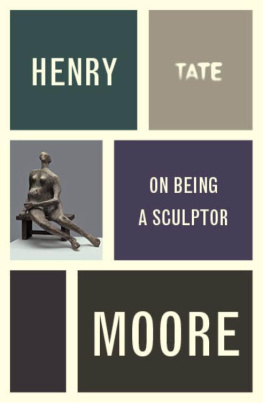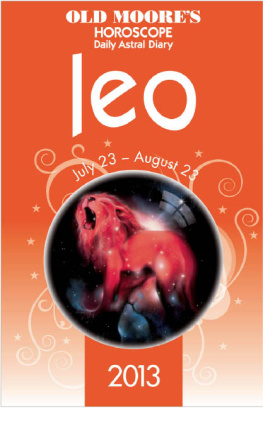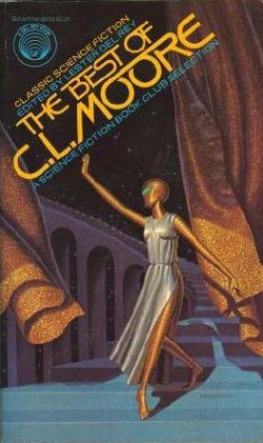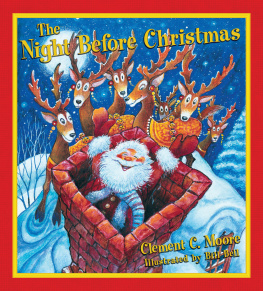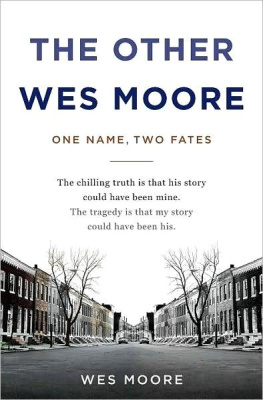
Who Wrote The Night Before Christmas?
Analyzing the Clement Clarke Moore vs. Henry Livingston Question
MacDonald P. Jackson

McFarland & Company, Inc., Publishers
Jefferson, North Carolina
LIBRARY OF CONGRESS CATALOGUING DATA ARE AVAILABLE
BRITISH LIBRARY CATALOGUING DATA ARE AVAILABLE
ISBN (ebook) 978-1-4766-2425-9
2016 MacDonald P. Jackson. All rights reserved
No part of this book may be reproduced or transmitted in any form or by any means, electronic or mechanical, including photocopying or recording, or by any information storage and retrieval system, without permission in writing from the publisher.
Front cover illustration from The Night Before Christmas or A Visit of St. Nicholas (New York: McLoughlin Bros., 1896, in Van DeusenKosinski Collection)
McFarland & Company, Inc., Publishers
Box 611, Jefferson, North Carolina 28640
www.mcfarlandpub.com
Acknowledgments
When in 2011 I became interested in debates about the authorship of The Night Before Christmas I could read texts of Clement Clarke Moores Poems (1844) through the electronic database Literature Online (http://literature.proquest.com) and the book itself through the Internet Archive: Digital Library (https://archive.org), while poems by Henry Livingston were available on Mary Van Deusens website devoted to him (www.henrylivingston.com). In December of that year I emailed Mary to ask a few questions. Before long she established a Research Site that provided me with ever-increasing information. Through her technological skills, and those of her superbly expert husband Paul Kosinski, I gained access not only to searchable texts and the contents of the Thomas Collection of materials relevant to claims made by Living- stons descendants that their ancestor composed The Night Before Christmas, but also to comprehensive word lists and word frequencies for both Moore and Livingston. Marys assiduous research and Pauls wizardry as computer programmer have been essential to the investigation reported on here.
The help of linguist Lyn Bates was indispensable in developing tests based on phonemes. I am extremely grateful to Mary, Paul, and Lyn for the extraordinary amount of work they have put into this project, not knowing what the results of the authorship tests I applied would be or how I would interpret all the data they supplied.
And of course anybody attempting to determine the authorship of The Night Before Christmas owes an enormous debt to Stephen Livingston Thomas, custodian of the Thomas Collection, and to his father and grandfather who amassed so much valuable material. I am grateful to Stephen and to Mary for allowing me unrestricted use of it.
I should also like to thank Seth Kaller, who generously and helpfully answered the queries I addressed to him early in my investigations, when neither he nor I could foresee the outcome; Paul Vincent for his meticulous editorial work on my manuscript; Brian Boyd for reading it and suggesting improvements; Rob Lovett for designing graphs; Daphne Lawless for compiling the index; and Nicole Jackson for constant support.
Preface
The Night Before Christmas or A Visit from St. Nicholas may be the best-known poem of the English-speaking worldapart, perhaps, from the odd nursery rhyme. A classic of popular culture, it is an all-time favorite among children. The modern Western Santa Claus could hardly have existed without its vivid portrayal of Saint Nicholas as a jolly, rosy-cheeked, white-bearded, round-bellied bearer of gifts that he transports by an airborne reindeer-drawn sleigh, carries in a sack slung over his shoulder, and delivers by way of the chimney on Christmas Eve. The poem has been endlessly reprinted and illustrated. It has spawned by-products on film, television, and radio. It has featured in comics. There have been musical and theatrical versions, and thousands of translations, adaptations, and parodies. Poetry makes nothing happen, declared W. H. Auden, but these unpretentious verses did make something happen. After they had been published, Christmas celebrations would never be the same.
But who was the author of The Night Before Christmas, which made its first public appearance anonymously in a New York newspaper called the Troy Sentinel on 23 December 1823? Traditionally, it has been credited to Clement Clarke Moore, who included it in his Poems (1844). But counterclaims have been made on behalf of Henry Livingston, who died in 1828. His descendants maintain that he had composed it and read it to his family around 1808. My aim in this short monograph is to establish the truth of the matter, or, at the very least, to determine where the probabilities lie. Either Moore or Livingston gave pleasure to millions through writing the famous verses. This is no small achievement. We should give credit where credit is due. But to whom?
Moore (17791863) and Livingston (17481828) each produced a substantial body of verse. The poems that Moore thought worthy of preservation, at least up till 1844, were included in his collection of that date. To John Duers translation of The Third Satire of Juvenal (1806), to which Moore contributed an introductory essay on the defects of contemporary poetry, were added miscellaneous poems, original and translated, including several by Moore over the pseudonym L, but these were all reprinted in Poems. Also, among Moores unpublished papers there is an autograph notebook of verse written during the period 184352, long after The Night Before Christmas had appeared in print. An eminent classical scholar, Moore compiled A Compendious Lexicon of the Hebrew Language (1809), published George Castriot, Surnamed Scandenberg, King of Albania (1850), an adaptation of Zachary Joness 1596 English translation from the French of Jacques de Lavardin, and was also the author of political pamphlets.
Livingstons verse, in contrast to Moores, was never gathered into a printed book. He contributed poems anonymously or under pseudonyms to newspapers and magazines, as did other minor writers of his time, or addressed them to his children, nephews, nieces, other relatives, and friends. But the survival of bound manuscript leaves in which many of his poems are written out in his own handwriting allows a solid corpus of authentic works to be formed. A core poetic canon has been established and publicly available for several years. Livingston also published short essays and other prose pieces on a variety of topics.
This means that we have two bodies of verse to compare in our efforts to discover to which The Night Before Christmas rightly belongs. In the pages that follow, more autobiographical details of Moore and Livingston may be found. The external evidence of authorship is, of course, considered. Arguments put forward by parties to the controversy are assessed and in some instances refuted or strengthened. Some previously overlooked material is brought to light. Literary critical claims are made. But the main effort here is directed at discovering quantifiable features of the two mens poetic styles that serve to differentiate them, so that poems known to be by Moore or by Livingston fall into their correct authorial categories.
Attribution problems of the Author A versus Author B kind are potentially much more readily soluble than problems in which an anonymous work could be by any one of dozens of possible writers. We need not undertake the enormously difficult task of finding features that are, either singly or in combination, unique to either Moores or Livingstons style, and so identify the poet against all-comers. We need look only for features that are significantly more common in one candidates style than in the others. The relevant task is simply to discover characteristics that discriminate between the two. No one discriminator is likely to achieve perfect separation between all Moores poems and all Livingstons, but from the combined evidence of several independent discriminators, strong probabilities in favor of one or other poets authorship of The Night Before Christmas should emerge. The one essential requirement is that items for testing not be cherry-picked in order to produce a particular outcome, but be selected according to predetermined principles, so that the two authorial candidates are treated exactly alike.
Next page
